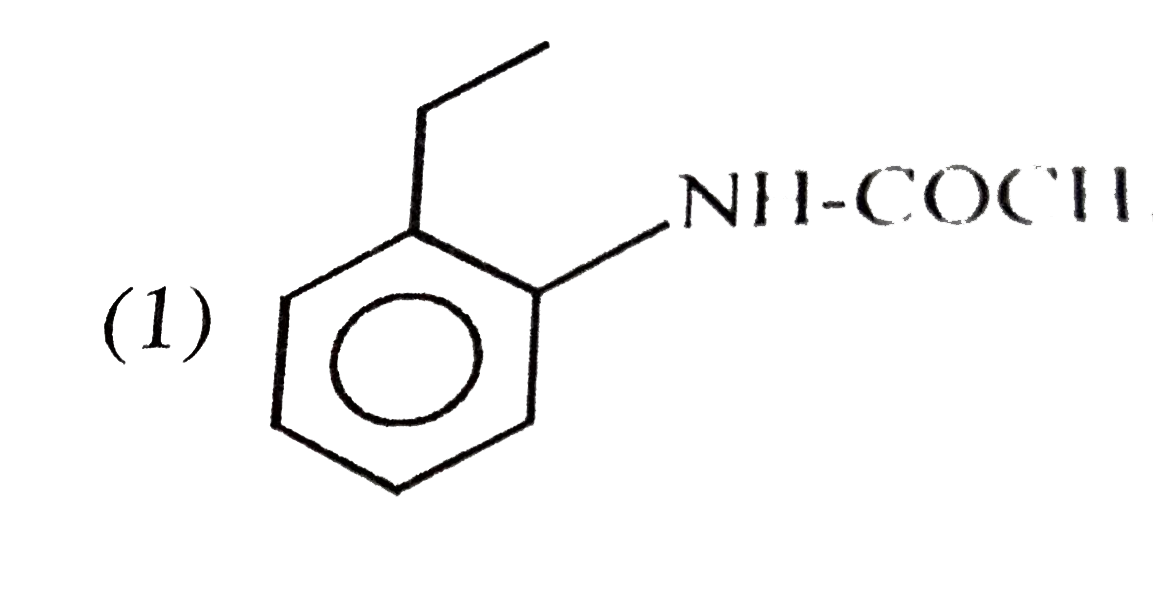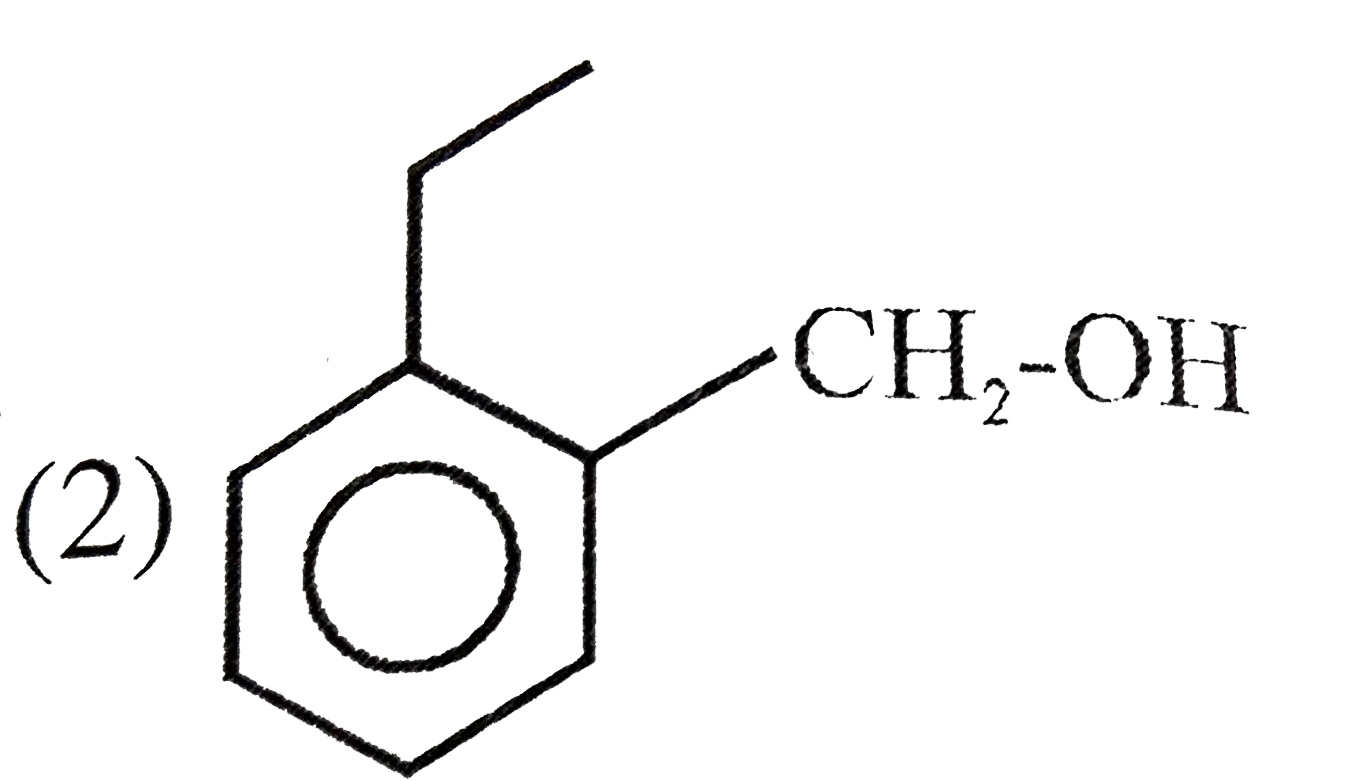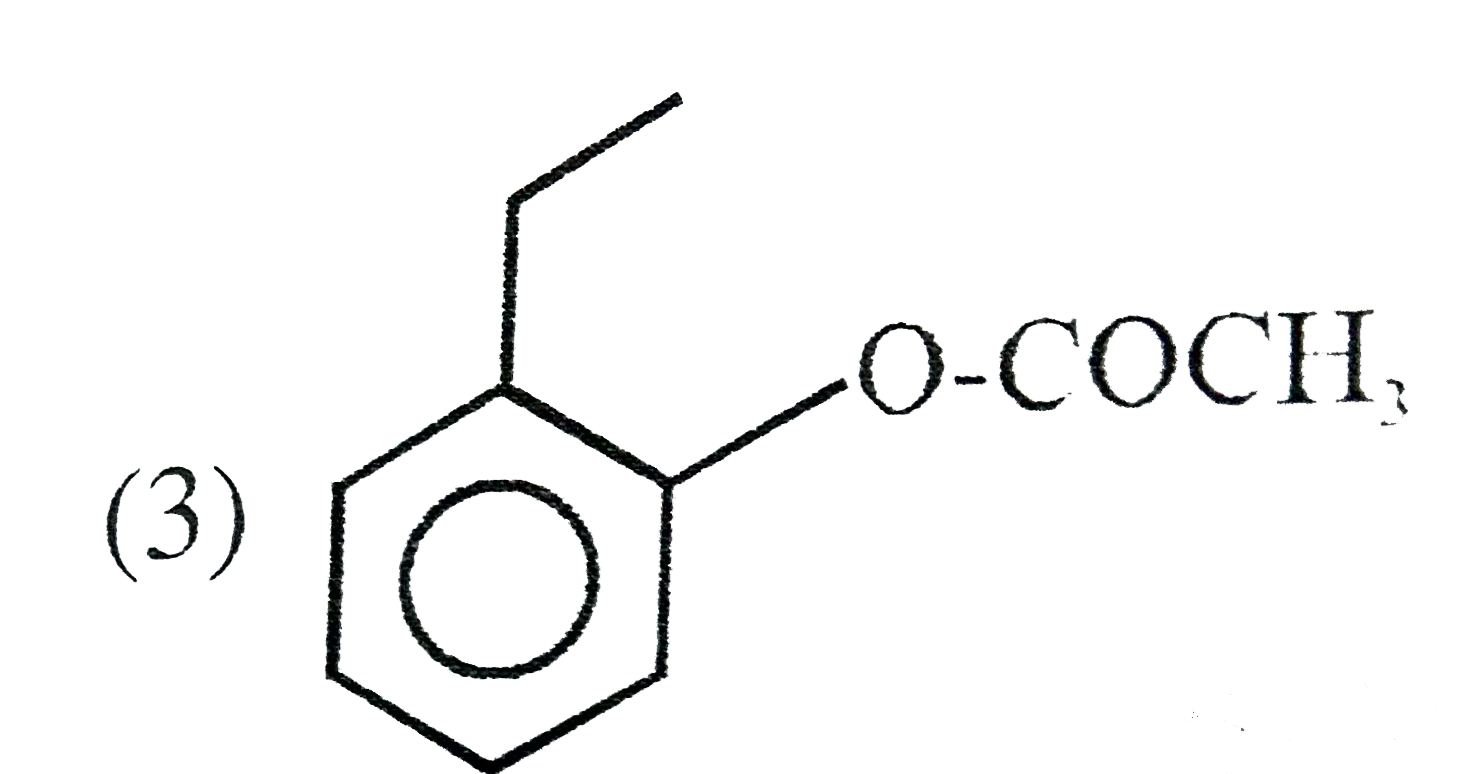Which one the most reactive towards electrophilic reagent:




The correct Answer is:D
To determine which compound is the most reactive towards electrophilic reagents, we need to analyze the electron-donating and electron-withdrawing effects of the substituents attached to the benzene ring in each compound. Here’s a step-by-step breakdown of the reasoning:
Step 1: Identify the Compounds
We have four compounds with a benzene ring and various substituents. The substituents include:
1. Ethyl group (Et) and a nitrogen atom (NH) attached to a carbonyl (C=O) and a methyl group (CH3).
2. Ethyl group (Et) and a hydroxyl group (OH) attached to a methylene (CH2).
3. Ethyl group (Et), a carbonyl (C=O), and a methyl group (CH3).
4. Ethyl group (Et) and a methoxy group (OCH3).
Step 2: Analyze Each Compound
- Compound 1: The nitrogen has a lone pair that can participate in resonance (donate electrons) but is weakened by the electron-withdrawing effect of the carbonyl group. Thus, it has a moderate +M effect and a +I effect from the ethyl group.
- Compound 2: The hydroxyl group (OH) has lone pairs but acts as an electron-withdrawing group due to its -I effect. The ethyl group contributes a +I effect. The overall effect is a weaker electron density on the benzene ring.
- Compound 3: Similar to compound 1, the carbonyl (C=O) can withdraw electrons, but the ethyl group still contributes a +I effect. The resonance effect is similar, leading to moderate reactivity.
- Compound 4: The methoxy group (OCH3) has a strong +M effect due to the lone pairs on oxygen being able to donate electrons into the benzene ring. The ethyl group contributes a +I effect, enhancing the electron density on the ring.
Step 3: Compare the Effects
- The strongest electron-donating group (which enhances reactivity towards electrophiles) is the methoxy group in compound 4.
- The other compounds have weaker electron-donating effects due to the presence of electron-withdrawing groups (like carbonyls and hydroxyls).
Conclusion
Based on the analysis of the electron-donating and withdrawing effects of the substituents, Compound 4 (with the OCH3 group) is the most reactive towards electrophilic reagents due to its strong +M effect.
Final Answer
The most reactive compound towards electrophilic reagents is Compound 4 (OCH3).
---
We have four compounds with a benzene ring and various substituents. The substituents include:
1. Ethyl group (Et) and a nitrogen atom (NH) attached to a carbonyl (C=O) and a methyl group (CH3).
2. Ethyl group (Et) and a hydroxyl group (OH) attached to a methylene (CH2).
3. Ethyl group (Et), a carbonyl (C=O), and a methyl group (CH3).
4. Ethyl group (Et) and a methoxy group (OCH3).
- Compound 1: The nitrogen has a lone pair that can participate in resonance (donate electrons) but is weakened by the electron-withdrawing effect of the carbonyl group. Thus, it has a moderate +M effect and a +I effect from the ethyl group.
- Compound 2: The hydroxyl group (OH) has lone pairs but acts as an electron-withdrawing group due to its -I effect. The ethyl group contributes a +I effect. The overall effect is a weaker electron density on the benzene ring.
- The strongest electron-donating group (which enhances reactivity towards electrophiles) is the methoxy group in compound 4.
- The other compounds have weaker electron-donating effects due to the presence of electron-withdrawing groups (like carbonyls and hydroxyls).
Based on the analysis of the electron-donating and withdrawing effects of the substituents, Compound 4 (with the OCH3 group) is the most reactive towards electrophilic reagents due to its strong +M effect.
The most reactive compound towards electrophilic reagents is Compound 4 (OCH3).
Topper's Solved these Questions
Similar Questions
Which one of the following is most reactive towards electrophillic reagent?
View SolutionAmong the following compounds the one that is most reactive towards electrophilic nitration is
View SolutionAmong the following compounds the one that is most reactive towards electrophilic nitration is
View SolutionAmong the following compound find the one which is maximum reactive towards electrophilic reagent ?
View SolutionWhich one is most reactive towards AgNO3
View SolutionAssertion : In strongly acidic solution, aniline becomes less reactive towards electrophilic reagents .
Reason : Due to protonation of amino group the lone pair of electrons on nitrogen is not available for donation to benzene ring by resonance .
View SolutionWhich one is most reactive towards nucleophilic addition reaction?
View SolutionWhich of the following is most reactive towards electrophillic aromatic substitution for halogen ?
View SolutionWhich one of the following is most reactive towards electrophilic attack?
View SolutionWhich of the following is the most reactive towards electrophilic substitution?
View Solution
